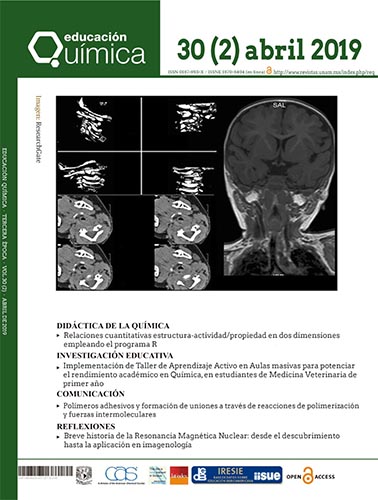Analysis of copper alloys as an introduction to data analysis and interpretation for General Chemistry courses
Contenido principal del artículo
Resumen
The work herein presents a laboratory experience designed to foster clear connections between chemistry concepts, experimental measurements, and laboratory techniques. The experience consists of three different experiments to be completed in sequence over several laboratory sessions. First the density of the samples is determined, then the specific heat capacity is measured, and finally the cooling curves are determined for the analytes. The experimental work covers fundamental concepts in chemistry (i.e., density, calorimetry, and first-order kinetics), and guides students to develop an overarching comprehension of the chemical and physical properties of the analytes. The analytes are copper alloys with other metals (i.e., Sn, Zn, and Al) with variable chemical compositions. These alloys are robust (i.e., thermally stable, durable), and allow for the collection of reproducible data under the proposed experimental design, as shown in the work herein. The discussion of student-gathered data and results supports the feasibility of the laboratory experience for its implementation in General Chemistry laboratory programs.
Detalles del artículo
Citas en Dimensions Service

Educación Química por Universidad Nacional Autónoma de México se distribuye bajo una Licencia Creative Commons Atribución-NoComercial-SinDerivar 4.0 Internacional.
Basada en una obra en http://www.revistas.unam.mx/index.php/req.
